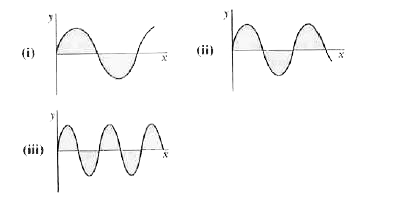The mathmaticaly form of three travelling waves are given by
Y1=(2cm)sin(3x−6t)
Y2=(3cm)sin(4x−12t)
And Y3=94cm)sin(5x−11t)
of these waves,
Wave 1 has greatest wave speed and greatest maximum transverse string speed
wave 2 has greatest wave speed and wave 1 has greatest maximum transverse string speed
wave 3 has greatest wave speed and wave 1 has greatest maximum transverse string speed
wave 2 has greatest wave speed and wave 3 has greatest maximum transverse string speed
The correct Answer is:d
For the wave, y=Asin(kx−ωt),the wave speed is ω/k and the maximum transvers string speed is Aω.
Topper's Solved these Questions
- TRAVELLING WAVESBOOK - CENGAGE PHYSICSCHAPTER - TRAVELLING WAVESEXERCISE - Single Correct Answer
1 Videos
- TRAVELLING WAVESBOOK - CENGAGE PHYSICSCHAPTER - TRAVELLING WAVESEXERCISE - Multiple Correct
25 Videos
- TRAVELLING WAVESBOOK - CENGAGE PHYSICSCHAPTER - TRAVELLING WAVESEXERCISE - Subjective
16 Videos
- TRANSMISSION OF HEATBOOK - CENGAGE PHYSICSCHAPTER - TRANSMISSION OF HEATEXERCISE - Single correct
9 Videos
- VECTORSBOOK - CENGAGE PHYSICSCHAPTER - VECTORSEXERCISE - Exercise Multiple Correct
5 Videos
Similar Questions
Find the resultant amplitude and the phase difference between the resultant wave and the first wave , in the event the following waves interfere at a point , y1=(3cm)sinωt,
y2=(4cm)sin(ωt+π2),y3=(5cm)sin(ωt+π)
View SolutionHere are the equations of three waves:
(1) (y) (x,t) =2 sin (4x-2t), (2). (y)(x,t) =sin (3x-4t), (3) (y) (x,t)=2 sin (3x-3t). Rank the waves according to their (a) wave speed and (b) maximum speed perpendicular to the wave's direction of travel (the transverse speed), greatest first.
View Solution
Knowledge Check
Three traveling sinusoidal waves are on identical strings. with the same tension. The mathematical forms of the waves are y1(x,t)=ymsin(3x−6t),y2(x,t)=ymsin(4x−8t),andy3(x,t)sin(6x−12t), where x is in meters and t is in seconds. Match each mathematical form to the appropriate graph below:
 Ay1−(i),y2−ii,y3−(iii)By1−(iii),y2−(ii),y3−(i)Cy1−(i),y2−(iii),y3−(ii)Dy1−(ii),y2−(i),y3−(iii)
Ay1−(i),y2−ii,y3−(iii)By1−(iii),y2−(ii),y3−(i)Cy1−(i),y2−(iii),y3−(ii)Dy1−(ii),y2−(i),y3−(iii)Two progressive transverse waves are described by :
y1=3.0cmsin[(4x−700t)rad] and
y2=3.0cmsin[(4x−700t−π/3)rad].AAmplitude of a resultant wave is 3√3cmBResultantis a standing wave.CResultant is a progressive waveDThe particle will be oscillating in xy-plane.The displacement of a particle of a string carrying a travelling wave is given by y=(4cm)sin2π(0.5x−100t), where x is in cm and t is in seconds. The speed of the wave is
A50 cm/sB100 cm/sC200 cm/sD250 cm/s
When two progressive waves y1=4sin(2x−6t) and y2=3sin(2x−6t−π2) are superimposed, the amplitude of the resultant wave is
View SolutionThe displacement of a particle of a string carrying a travelling wave is given by y = (3 cm) sin 6.28 (0.50 x – 50 t) where x is in centimeter and t is in second. The velocity of the wave is-
View SolutionThe equation of a travelling wave is given by
y = 0.5 sin(20x - 400t)
where x and y are in metre and t is in second. The velocity of the wave is :
View SolutionThe equation of a travelling wave is given by
y = 0.5 sin(20x - 400t)
where x and y are in metre and t is in second. The velocity of the wave is :
View SolutionThree waves y1,y2,y3 are given by y1=Asin(Kx−ωt),y2A=sin(Kx+ωt)andy3=Asin(Ky−ωt). Which one of the following represents wave ?
View Solution
